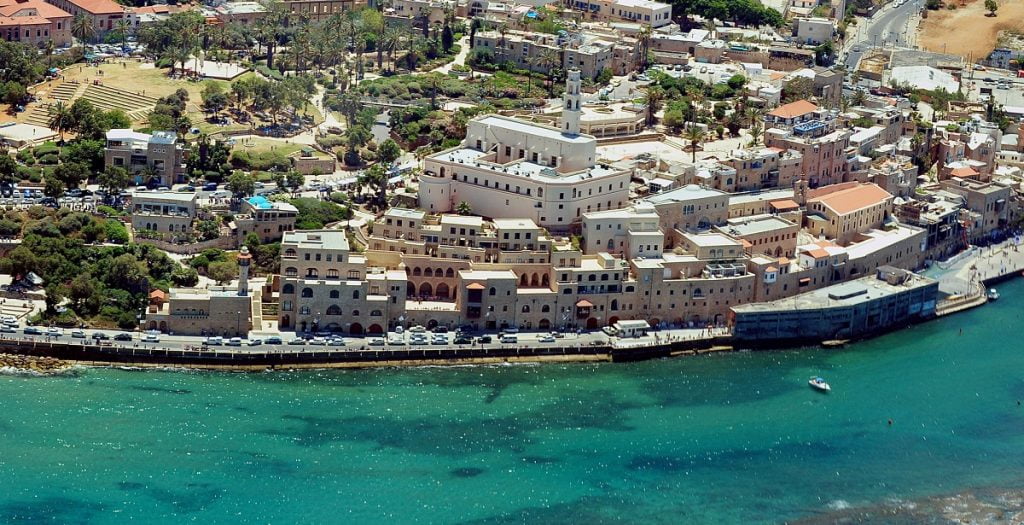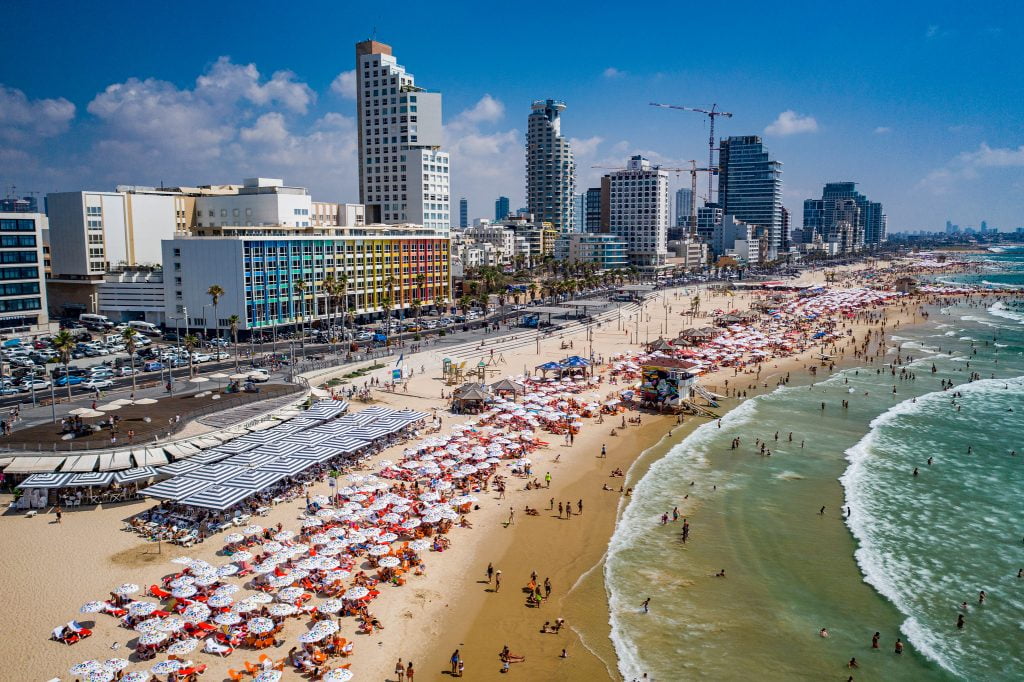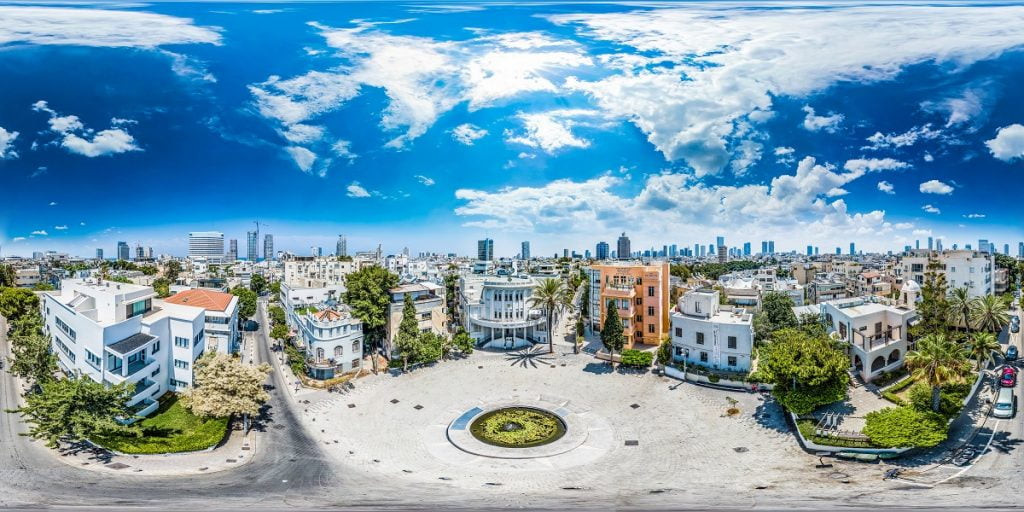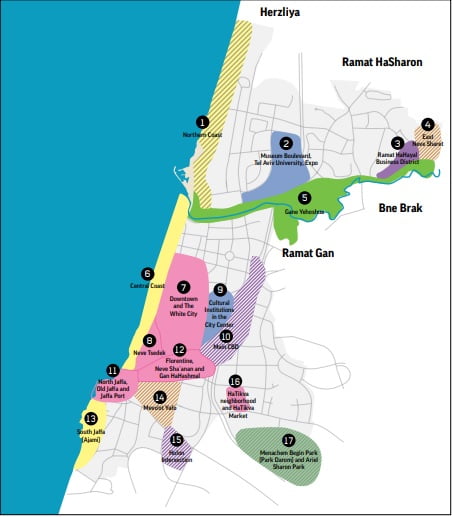Tel Aviv-Yafo will be one of the most popular urban destinations in the world by 2030 if everything goes according to the municipality’s long-term tourism strategic plan.
On the heels of a powerful year for tourism in 2019, the Tel Aviv-Yafo Municipality recently unveiled a “Master Plan” detailing the city’s needs to make it a top holiday destination: better branding, an upgraded tourism infrastructure, more accommodation options, and efficient, integrative management.
SEE ALSO: Can A Tel Aviv Getaway Help Mend A Broken Heart?
“The work on the Master Plan included an in-depth examination and analysis of the city from a tourism perspective. We carefully assessed our assets and advantages but were also unwavering in confronting the challenges and flaws,” said Eytan Schwartz, director of media and communications at the Tel Aviv-Yafo Municipality.

According to the Master Plan document, Tel Aviv said tourists have complained most about the high prices, the traffic jams and the lack of an efficient transportation system, the lack of affordable lodging, and the general uncleanliness of public spaces.
The goal is to focus on improving these aspects and focus on developing the more distinct and unique offerings.
Schwartz said Tel Aviv’s “unique DNA” as a tourist destination “rests on three pillars: the ancient city – Old Jaffa – which is our main attraction; the new city – Tel Aviv – which is characterized by phenomenal urban vitality; and, of course, the beach – with its extraordinary qualities.”

Indeed, for its 20 Destinations for 2020, Forbes magazine hailed Tel Aviv as a place where “ancient history and modern living meet in the bustling beach city along Israel’s Mediterranean coast.”
Of course, Forbes was just one of dozens of travel magazines and media sites the world over to splatter superlatives on Tel Aviv’s vibe and appeal as a tourist destination. The Washington Post chose Tel Aviv to be its first Israeli city included in its local guide series. The BBC’s Good Food magazine chose the city-by-the-sea as one of its top 10 destinations for foodies in 2020. And Google ranked Tel Aviv among its top trending destinations worldwide this year.
In addition to all these accolades, Tel Aviv snagged the spotlight in 2019 when it hosted the Eurovision Song Contest, which was the largest international event ever held in the city in its 110 years of existence.

“In the past few years, we have been witnessing a tourism miracle,” said Tel Aviv-Yafo Mayor Ron Huldai. “Tel Aviv-Yafo used to be a small city that only few tourists visited. It remains a small city, but one whose name is now recognized globally, and many people want to experience.”
SEE ALSO: Delicious Israel: Off-The-Radar Tel Aviv Restaurant Picks To Start Off 2020
“This Master Plan aims to sustain the tourism boom, manage it prudently and plan wisely for the future. Tourism in Tel Aviv-Yafo is a highly important economic engine for the city and the entire metropolitan area,” said Huldai.
Tel Aviv’s Master Plan calls for promoting new attractions every year and making existing content accessible for tourists with better information centers, guiding facilities, language services, and transportation infrastructure.
Niche tourism markets
The city’s initiative will gear toward specific niche markets including tourism from China, religion-specific tourism and “silver tourism” focused on drawing older tourists (most tourists are between 25-45, according to the municipality).
The city said that, amid the potential of attracting Chinese tourists, it will increase efforts to “customize the Tel Aviv tourism product to the unique characteristics of the Chinese market, including the adoption of ‘China Ready’ service quality standards by tour operators in the city.” (China-Ready entails having signs and content in Chinese at major sites, accepting Chinese methods of payment, and being mindful of cultural differences).

Tel Aviv believes it will also welcome more Muslim and Arab tourists in the coming years, both from the region and from Western countries, and Jewish tourists interested in the city’s Jewish cultural offerings.
The plan calls to focus on upgrading museums and other Jewish heritage sites while increasing “the scope of tourism experiences related to Jewish history and the Jewish religion.” For example, the ambitious plan calls for the establishment of a museum dedicated to the accomplishments of the Jewish people, one for the “linguistic miracle” that is Hebrew, and synagogue tours.
And finally, the city said it will make efforts to draw in senior citizen tourists, a niche that has been steadily growing worldwide.
Sign up for our free weekly newsletter
Subscribe‘Jogging on water’ and a floating amusement park
In 2019, Tel Aviv celebrated 100 years of Bauhaus with the grand opening of the city’s official White City Center, the Peres Center for Peace and Innovation established its “Israeli Innovation Center” exhibition space, The Steinhardt Museum of Natural History opened its doors, and Bloomfield Stadium, finished extensive renovations, and continues to accommodate sports and cultural events.

But it is proposing major projects such as a jogging course on the water, a floating amusement park for kids, and a beach zipline into the water.
In other parts of the city, like Yarkon Park (Ganei Yehoshua), the plan calls for creating a campsite for affordable, alternative lodging, developing community tourism that brings together locals and residents in Jaffa (Yafo), Neve Tzedek, and the Yemenite Quarter, and promoting existing cultural institutions in the city center such as the Cameri Theater and the Israeli Opera.

The plan defines 17 “tourism zones” across the city, half of which already exist, and half which will see added tourist attractions in the coming years.
These zones, according to the plan, will be given priority in future tourism development.
More hotels and rentals
The enthusiastic plan outline also cites that it will add new hotels amid a projected increase in the number of tourists who spend the night in the city. According to calculations based on annual growth of between 2.3 percent and 7.5 percent, the city says it may welcome between three million and 5.5 million tourists for an overnight stay by 2030.
There will also be a focus on converting existing buildings into hotels in industrial and business districts and the plan calls to give “greater preference” in the coming years to these projects given the financial incentives to developers and the shorter amount of time it takes to set it up.
Regulating and improving the rental market for tourists is also in the cards, according to the plan. Tel Aviv is among the 10 most expensive cities in the world to rent an Airbnb apartment with some 17,000 such rental properties available across the city at prices that are “among the highest in the world.”
The Master Plan indicates that the municipality will begin taking “active measures to reduce the number of apartments that have in effect become hotels.”
“The Municipality encourages residents to host tourists in their homes or to rent out their apartments while they themselves are vacationing somewhere else. But it objects to the new situation which has emerged, where thousands of apartments are no longer available on the rental market for Israelis and cater solely to tourists,” the plan reads.
To maintain a rental market that balances between the tourist demand and the residents’ quality of life, the city “will take steps together with the Government of Israel to regulate apartments that are rented only to tourists.”
To ensure that locals don’t suffer the same fate as other over-touristed cities like Amsterdam or Barcelona, the Tel Aviv plan puts an emphasis on sustainable development and takes into consideration the wellbeing of city residents including preserving the character of the neighborhoods and communities in which the tourism operates.
“The municipal vision for tourism aims to position our city as a leading urban destination, while constantly renewing the tourist product and prioritizing the concerns of the city’s residents. We believe that the key to creating a good city for tourists is in finding the right balance between the needs of the locals and those of the visitors,” said Udi Carmely, City Engineer at the Tel Aviv-Yafo Municipality.
Nationwide tourism boom
And it’s not just Tel Aviv that’s enjoying a tourist boom, in 2019, Israel welcomed over 4.5 million tourists and the Tel Aviv Ben Gurion Airport welcomed 24 million international passengers, which was an increase of 1.6 million compared to 2018.
In mid-February, the 26th International Mediterranean Tourism Market took place in Tel Aviv, drawing tour operators and travel agents from 40 countries to the city to discuss domestic and international tourism business.
There are 140 airlines with direct flights to Tel Aviv, according to the municipality spokesperson. The main countries flying to Israel, according to 2019 data, and comprising over 50 percent of the passengers, were from Turkey, United States, Italy, France, Greece, Germany, Russia, UK, Spain, and Ukraine.
Viva Sarah Press is a journalist and speaker. She writes and talks about the creativity and innovation taking place in Israel and beyond. www.vivaspress.com
Related posts

Rehabilitation Nation: Israeli Innovation On Road To Healing

Israeli High-Tech Sector 'Still Good' Despite Year Of War





Facebook comments